Real Estate & Property Management
Introducing New Technology? Top 10 Effective Strategies for Multifamily Property Managers
Are you introducing a new technology in your multifamily property management company? It’s not a flippant process; it requires careful planning and execution.
Here is a suggested plan:
Identify the Need
- Analyze the current processes and pain points in the organization. Enterprise Business Planning is one way to unearth the points.
- Determine the areas where the new technology can significantly improve, such as enhancing efficiency, reducing costs, or improving resident satisfaction.
- Remember team-member engagement and satisfaction. Just because you can introduce a new system doesn’t mean you should.
Research and Evaluation
- Conduct thorough research on the available technology solutions in the market.
- Evaluate different supplier partners’ offerings based on functionality, scalability, integration capabilities, security, and cost.
- Talk to your current supplier partners; they may have the solution in their offering.
- Consider seeking input from industry experts or consultants with experience implementing similar technologies.
Stakeholder Engagement
- Identify key organizational stakeholders, including executive leadership, department heads, property managers, and other relevant team members.
- Find your biggest cynics and turn them into raving fans. They will be a big part of a successful roll-out.
- Also, enlist your sneezers (influencers). They tend to have an overweight influence on the company regarding change.
- Organize meetings and presentations to educate stakeholders about the potential benefits of the new technology and gather their feedback and input.
- Address any concerns or objections raised by stakeholders and ensure their buy-in.
Pilot Implementation
- Select a small group of properties or a single location to pilot the new technology implementation.
- Develop a detailed implementation plan, including timelines, resources, training, and support requirements.
- Closely monitor the pilot implementation, gathering user feedback and addressing any issues.
- Evaluate the pilot’s success based on predetermined metrics and make necessary adjustments before a broader rollout.
Training and Change Management
- Develop comprehensive training materials and programs for team members using the new technology.
- Consider hiring a change management consultant or designating an internal team to facilitate the adoption of the new technology and address any resistance to change.
- Provide ongoing support and resources to ensure successful adoption and utilization of the new technology.
Phased Rollout
- Based on what was learned from the pilot implementation, a phased rollout plan for the new technology should be developed across the entire company.
- Divide the rollout into manageable phases, prioritizing properties or locations with the greatest need or potential for immediate impact.
- Continuously monitor and adjust the rollout plan, addressing any challenges or issues.
Continuous Improvement and Optimization
- Establish processes for gathering feedback and suggestions from users and stakeholders on an ongoing basis. Feedback is key!
- Regularly review the performance and utilization of the new technology, identifying areas for improvement or optimization.
- Collaborate with the technology vendor or internal IT team to implement updates, enhancements, or integrations to enhance the new technology’s value further.
Communication and Promotion
- Develop a comprehensive communication plan to keep stakeholders, team members, and residents informed about the new technology and its benefits.
- Promote the successful implementation and adoption of the new technology through internal and external channels, such as company newsletters, social media, or industry events.
While no plan is flawless, winging it ensures failure. This plan may have gaps, but following it gives your company the best shot at nailing the new tech rollout.
One last tip – don’t be afraid to pull the plug!
Share this:
1,604 Responsiveness in the Multifamily Industry: A Key to Success
Welcome to a thought-provoking episode of the Multifamily Collective, where we address essential topics in the multifamily industry. Today’s discussion focuses on the significant role of responsiveness.
This episode, hosted by Mike Brewer, an experienced thought leader in the multifamily field, examines the importance of prompt communication.
Responsiveness is vital to business practice, impacting relationships with clients, team members, vendor partners, and investors.
The episode begins by exploring how quick and thoughtful responses build stakeholder trust and satisfaction.
This segment highlights the role of responsiveness in enhancing client relationships and satisfaction in property management.
Next, the focus shifts to the impact of responsiveness on internal operations.
Mike Brewer discusses RADCO’s use of a ticketing system for efficiently handling requests related to IT, HR, and marketing.
This part of the episode demonstrates how timely responses can improve workflow efficiency and reduce uncertainties within an organization.
Finally, the episode addresses the importance of responsiveness in maintaining a competitive edge in the multifamily sector.
Responding quickly and accurately is essential for success in this fast-paced industry.
Mike Brewer offers practical advice on how effective communication can set a property management company apart.
This episode of the Multifamily Collective highlights that responsiveness is not just about reacting quickly; it’s a strategic approach that can significantly influence the success of a multifamily business.
Join us as we continue to explore key topics in the multifamily industry, focusing on innovation, leadership, and operational excellence.
URLs:
Share this:
Mastering Leadership: Navigating Beyond the Uncontrollable in Multifamily Leadership

Photo by Brett Jordan on Unsplash
Steering a course through uncharted waters often hinges on a fundamental yet challenging principle: focusing on the elements within our control and gracefully accepting those beyond it. Let’s dive into the heart of this concept, specifically tailored for leaders cultivating the skill of attentive listening in their teams and organizations.
Effective leadership’s core lies in the ability to discern between what can be influenced and what must be accepted. Leaders in the multifamily space frequently encounter scenarios that test their resolve, patience, and strategic thinking. It is in these moments that the true essence of leadership is revealed.
Consider the unpredictability of the market, team members, and resident expectations. These factors, often outside the direct control of a leader, can significantly impact decision-making and strategic planning. However, the leader’s response to these uncontrollable elements can set the tone for the organization.
The first step in mastering this approach is acknowledging the limits of one’s influence. This acknowledgment does not equate to passivity or defeatism. Instead, it is an exercise in realism and strategic focus. By identifying areas where impact is possible, leaders can channel their efforts more effectively, ensuring that the futile pursuit of the unattainable does not dilute their actions.
The second critical aspect is the cultivation of a listening-oriented leadership style. In a human-centric culture, understanding residents’ and team members’ perspectives, concerns, and aspirations is vital. Active listening not only aids in making more informed decisions but also fosters an environment of trust and mutual respect. Through this deep understanding, leaders can identify areas of potential influence and navigate the complexities of the multifamily landscape with greater clarity and purpose.
Moreover, embracing a mindset that prioritizes controllable elements encourages a culture of proactivity and innovation within the organization. Teams led by such leaders are more likely to adopt a solution-focused approach, seeking creative ways to overcome challenges and capitalize on opportunities. This mindset shift is pivotal in an industry where staying ahead of the curve in terms of market trends, tech advancements, and resident satisfaction is crucial.
Another aspect to consider is the role of technology in amplifying a leader’s influence. In today’s digital age, embracing PropTech solutions can significantly enhance leaders’ ability to manage controllable aspects of their operations more efficiently and effectively. From optimizing your current property management systems to leveraging data analytics for better decision-making, the strategic use of technology can be a game-changer in multifamily.
The journey of a multifamily leader is one of constant learning and adaptation. Leaders can navigate the multifamily landscape more confidently and effectively by focusing on what can be controlled, embracing the art of listening, and leveraging technology. Through this focused approach, leaders can inspire their teams, satisfy their residents, and achieve sustained success in the ever-evolving multifamily industry.
Share this:
Mastering the Art of Leadership Charisma in Multifamily: Lessons from an Ancient Proverb

Photo by Chris Yang on Unsplash
Leadership is not just a position but a journey rich with opportunities and challenges. With this in mind, an ancient Chinese proverb resonates with profound simplicity and depth: “A man without a smiling face must not open a shop.” This seemingly straightforward saying encapsulates a profound truth about leadership and personal branding, especially in an industry as people-focused as multifamily real estate—charisma matters.
The Power of Positive Leadership
Research consistently shows leaders who project positivity and approachability achieve higher team engagement. A study by the American Psychological Association highlights that positive leadership behaviors significantly impact employee satisfaction and productivity. This translates to enhanced team performance and a more substantial brand reputation in the multifamily realm.
Building a Personal Brand through Authenticity
In an industry where personal interactions often dictate business success, a leader’s authenticity is paramount. Leaders in multifamily real estate must cultivate a genuine, approachable demeanor, mirroring the essence of the proverb. Harvard Business Review emphasizes the importance of authenticity in leadership, noting that genuine leaders build trust and foster stronger relationships with clients and team members.
Enhancing Resident Experiences through Emotional Intelligence
Connecting with residents and understanding their needs is a critical aspect of leadership in this sector. Emotional intelligence, a vital component of effective leadership, is significant in creating positive resident experiences. A study published in the Journal of Property Management reveals that leaders with high emotional intelligence can significantly improve customer satisfaction and loyalty.
Innovating with Technology while Maintaining Human Touch
Balancing technological advancements with a human-centric approach is crucial in an era of technology revolutionizing the multifamily industry. Innovative leaders who embrace technology while maintaining a personal touch distinguish themselves in the market. According to Forbes, the most successful real estate leaders leverage technology to enhance, not replace, human interactions.
Fostering a Culture of Positivity and Growth
The smiling face metaphor extends beyond personal interactions; it represents a culture of positivity and growth. Leaders who smile through their words and actions create an environment where innovation, creativity, and collaboration thrive. A positive workplace culture leads to higher productivity and better financial performance in real estate firms. People like to be around positive people, and positive people get positive outcomes.
Crisis Management with a Calm and Positive Demeanor
Even in times of crisis, the demeanor of a leader can make a significant difference. Maintaining a calm, positive outlook during challenging times instills confidence and resilience in teams and clients. Leaders who support a positive demeanor during crises can better navigate challenges and emerge stronger. And provide a good template for future leaders to follow.
Share this:
Unlocking Organizational Harmony: The Art and Science of Building Trust in Multifamily Leadership

Photo by Johannes Andersson on Unsplash
In a volatile market landscape that’s been hyper-accelerated by technological disruption and societal shifts, building trust within your organization is more than just a noble pursuit; it’s a strategic imperative. How about that for a lead for an article on trust and leadership? Said more simply – leaders, it’s crazy out there, and trust is critical to your company’s success.
Decoding ‘Trust’: A Multifaceted Currency
When you think of trust, consider it social capital—something intangible yet invaluable. In a multifamily enterprise, this capital makes negotiations smoother, enables the flexibility of roles, and, most importantly, fosters an environment conducive to innovative thinking. Trust isn’t merely a product of consistent interaction but is highly correlated to perceived competence and ethical conduct.
Dismantle Information Silos
In multifamily operations, real-time information sharing is crucial. PropTech solutions like data dashboards can help ensure everyone can access the same, up-to-date information. Gone are the days when information hoarding could be used as a power lever. Today, transparency is the true power.
Commit to Leadership Training
Ongoing training initiatives emphasizing emotional intelligence, active listening, and open communication equip your team with the skills to build and maintain trust. Contrary to mainstream business culture, strong leaders are those who show vulnerability and practice humility.
Cultivate an Inclusive Decision-making Process
Encourage participation from various roles in strategic decisions. When individuals feel their input is valued, trust naturally escalates. Smart algorithms can facilitate weighted voting systems to make the process more democratic.
Be a Catalyst for Autonomy
Promoting autonomy does not mean a lack of control. Advanced Project Management Software like Asana or Monday.com allows individuals to manage tasks while leadership can monitor project statuses and timelines.
Foster Psychological Safety
An atmosphere where people feel safe to express ideas without fear of judgment is a breeding ground for trust. AI-driven sentiment analysis tools can provide invaluable insights into the organizational emotional climate.
Focus on Accountability, Not Blame
A future-oriented approach that encourages learning from mistakes rather than punishing them can significantly elevate trust. Platforms like Jira or GitLab provide excellent accountability tracking without the stigma of blame.
Implement Ethical AI
With AI becoming more prevalent in decision-making processes, ensuring that your AI algorithms are transparent and unbiased can significantly elevate trust. AI ethics consultants can help in the process of auditing algorithms for biases.
Showcase Success and Acknowledge Failure
Regularly celebrating team successes and transparently acknowledging setbacks motivates and engenders trust. Real-time recognition platforms like Bonusly can be incorporated for this purpose.
Sustain Trust Through Consistency
Consistency is key in terms of organizational policies or how leaders respond to challenges.
Share this:
- Page 1
- Page 2
- Page 3
- Interim pages omitted …
- Page 6
- Go to Next Page »

